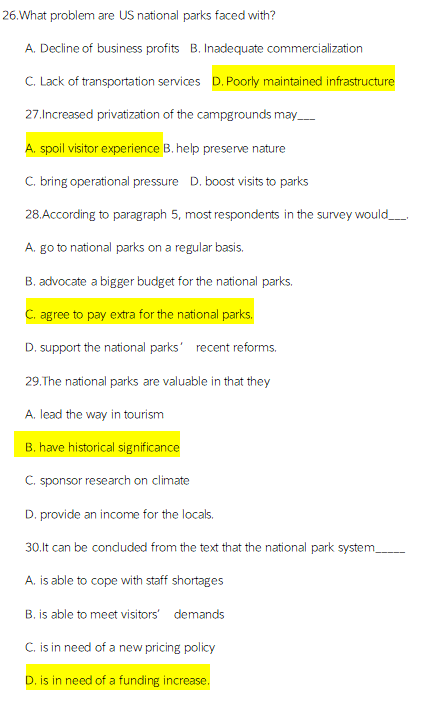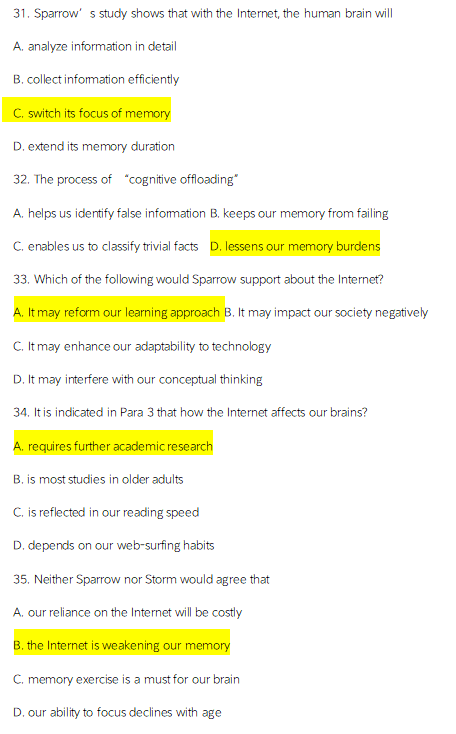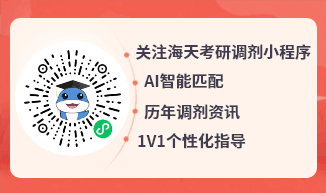2023考研英语二阅读理解真题及解析
历年考研英语真题就是帮助大家掌握考研英语词汇,在做题过程中不仅可以了解出题思路,也可以查漏补缺找出薄弱的考研知识点,海天考研英语老师为大家整理了2023年考研英语二阅读理解真题及解析,备战2025考研的同学也可以参考一下。
Text 1
In the quest for the perfect lawns, homeowners across the country are taking a shortcut -- and it is the environment that is paying the price. About eight million square meters of plastic grass is sold each year but oppositions has now spread to the highest gardening circles. The Chelsen Flower Show has banned fake grass from this year’s event, declaiming it to be not part of its ethos. The Royal Horticultural Society (RHS), which norms the annual show in west London, says it has introduced the ban because of the damage plastic grass does to the environment and biodiversity.
Ed Horne of the RHS said: we launched our sustainability strategy last year and fake grass is just not in line with our ethos and views on plastic. We recommend using real grass because of its environment benefits, which include supporting wildlife, alleviating flooding and cooling the environment.
The RHS’s decision comes as compaginers try to raise awareness of the problem fake grass cause. A Twitter account, which claims to “cut through the greenwash” of artificial grass, already has more than 20,000 followers. It is trying to encourage people to sigh two petitions, one calling for a ban on the sale of plastic grass and another calling for an “ecological damage” tax on such lawns. They have gathered 7,276 and 11,282 signatures.
However, supporters of fake grass point out that there’s also an environmental impact with natural lawns, which need mowing and therefore usually consume electricity or petrol. The industry also points out that real grass require considerable amounts of water, weed killer or other treatments and that people who lay fake grass tend to use their garden more. The industry also claims that people who lay fake grass spend on average of £500 trees or shrouds for their garden, which provides habitat for insects.

Text 2
It's easy to dismiss as absurd the federal government's ideas for plugging the chronic funding gap of our national parks. Can anyone really think it's a good idea to allow Amazon deliveries to your tent in Yosemite or food trucks to line up under the redwood trees at Sequoia National Park?
But the government is right about one thing: U.S. national parks are in crisis. Collectively, they have a maintenance backlog of more than $12 billion. Roads, trails, restrooms, visitor centers and other infrastructure are crumbling.
But privatizing and commercializing the campgrounds would not be a crue all. Campgrounds are a tiny portion of the overall infrastructure backlog, and businesses in the parks hand over, on average, only about 5% of their revenues to the National Park Service.
Moreover, increased privatization would certainly undercut one of the major reasons why 300 million visitors come to the parks each year: to enjoy nature and get a break from the commercial drumbeat that overwhelms daily life.
The real problem is that the parks have been chronically starved of funding. An economic survey of 700 U.S. taxpayers foundthat people would be willing to pay a significant amount of money to make sure the parks and their programs are kept intact. Some 81% ofrespondentsaid they would be willing to pay addítional taxes for the next 10 years to avoid anycuts to the national parks.
The natiopal parks provide greaf yaluejto U.S. residents both as places to escape and assymbols of nature. On top of this, they produce value from their extensive educational programs, their positive impact on the climate through carbon sequestration, their contribution to our cultural and artistic life, and of course through tourism. The parks also help keep America's past alive, working with thousands of local jurisdictions around the country to protect historical sites and to bring the stories of these places to life.
The parks do all this on a shoestring. Congress allocates only 3 bilion a year to the national park system — an amount that has been flat since 2001 ( in inflation-adusted dollars) with the exception of a onetime boost in 2009. Meanwhile, the number of annual visitors has increased more than 50% since 1980, and now stands at 330 million visitors per year.

Text 3
The Internet may be changing merely what we remember, not our capacity to
do so, suggests Columbia University psychology professor Betsy Sparrow. In 2011, Sparrow led a study in which participants were asked to record 40 factoids in a computer ("an ostrich's eye is bigger than its brain," for example). Half of the participants were told the information would be erased, while the other half were told it would be saved. Guess what? The latter group made no effort to recall the information when quizzed on it later, because they knew they could find it on their computers. In the same study, a group was asked to remember both the information and the folders it was stored in. They didn't remember the information, but they remembered how to find the folders. In other words, human memory is not deteriorating but "adapting to new communications technology," Sparrow says.
In a very practical way, the Internet is becoming an external hard drive for our memories, a process known as "cognitive offloading." Traditionally, this role was fulfilled by data banks, libraries, and other humans. Your father may never remember birthdays because your mother does, for instance. Some worry that this is having a destructive effect on society but Sparrow sees an upside. Perhaps, she suggests, the trend will change our approach to learning from a focus on individual facts and memorization to an emphasis on more conceptual thinking - something that is not available on the Internet. “I personally have never seen all that much intellectual value in memorizing things," Sparrow says, adding that we haven't lost our ability to do it.
Still other experts say it's too soon to understand how the Internet affects our brains. There is no experimental evidence showing that it interferes with our ability to focus, for instance, wrote psychologists Christopher Chabris and Daniel J. Simons. And surfing the web exercised the brain more than reading did among computer-savvy older adults in a 2008 study involving 24 participants at the Semel Institute for Neuroscience and Human Behavior at the University of California, Los Angeles.
"There may be costs associated with our increased reliance on the Internet, but I'd have to imagine that overall the benefits are going to outweigh those costs," observes psychology professor Benjamin Storm. "It seems pretty clear that memory is changing, but is it changing for the better? At this point, we don't know."

Text 4
Teenagers are paradoxical. That’s a mild and detached way of saying something that parents often express with considerably stronger language. But the paradox is scientific as well as personal. In adolescence, helpless and dependent children who have relied on grown-ups for just about everything become independent people who can take care of themselves and help each other. At the same time, once cheerful and compliant children become rebellious teenage risk-takers.
A new study published in the journal Child Development by Eveline Crone of the University of Lerden and colleagues, suggests that the positive and negative sides of teenagers go hand in hard. The study is part of a new wave of thinking about adolescence. For a long time, scientists and policy markers concentrated on the idea that teenagers were a problem needed to be solved. The new work emphasizes that adolescence is a time of opportunity as well as risk.
The researchers studied "prosocial" and rebellious traits in more than 200 child and young adults, ranging from 11 to 28 years old. The participants filled out questions about how often they did things that were altruistic and positive, like sacrificing their own interests to help a friend or rebellious and negative, like getting drunk or staying out late.
Other studies have shown that rebellious behavior increased as you become a teenager and then fades away as you grow older. But the new study shows that, interestingly, the same pattern holds for prosocial behavior .Teenagers were more likely than younger children or adults to report that they did things like selfishly help a friend.
Most significantly ,there was a positive correlation between prosociality and rebelliousness. The teenagers who were more rebellious were also more likely to help others. The good and bad sides of adolescence seem to develop together.
Is there some common factor that underlies these apparently contradictory developments? One idea is that teenager behavior is related to what researchers call” reward sensitivity." Decision-making always involves balancing rewards and risks, benefits and costs “Reward sensitivity” 'measures how much reward it takes to outweigh risk .
Teenagers are particularly sensitive to social rewards-winning the game, impressing a new friend, getting that boy to notice you. Reward sensitivity, like prosocial behavior and risk-taking, seems to go up in adolescence and then down again as we age. Somehow, when you hit 30, the chance that something exciting and new will happen at that party just doesn’t seem to outweigh the effort of getting up off the conch.

以上就是2023年考研英语二阅读理解真题及解析的全部内容,多练题扩大词汇量,掌握考研英语重难点词汇,更多考研英语真题,继续关注海天考研网。
2025考研人数达388w,考研热度依旧火热!如何备战2026考研?哪个考研专业适合自己?在职考生如何备考?考研知识点繁多,择校困难大,和海天考研咨询老师聊一聊。网课面授多项选,专业辅导1对1,全年集训随时学!







